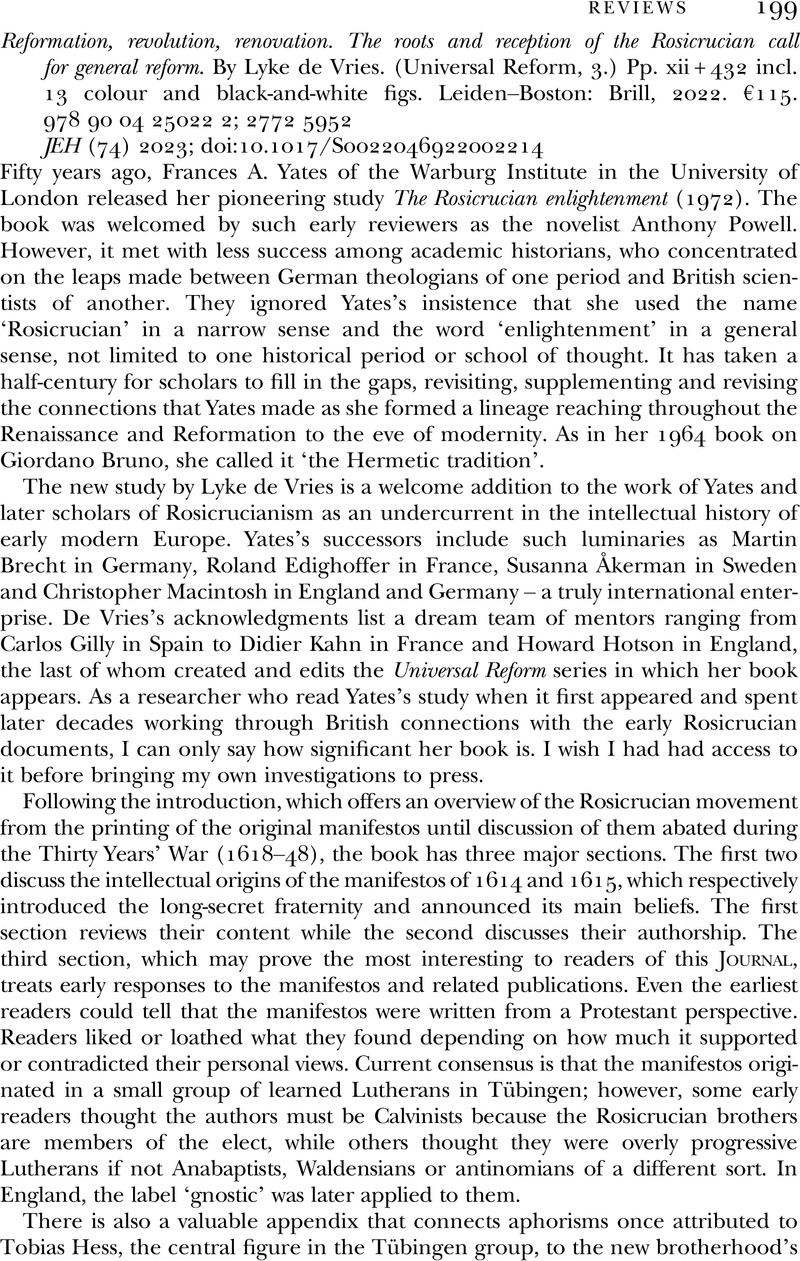No CrossRef data available.
Article contents
Reformation, revolution, renovation. The roots and reception of the Rosicrucian call for general reform. By Lyke de Vries. (Universal Reform, 3.) Pp. xii + 432 incl. 13 colour and black-and-white figs. Leiden–Boston: Brill, 2022. €115. 978 90 04 25022 2; 2772 5952
Review products
Reformation, revolution, renovation. The roots and reception of the Rosicrucian call for general reform. By Lyke de Vries. (Universal Reform, 3.) Pp. xii + 432 incl. 13 colour and black-and-white figs. Leiden–Boston: Brill, 2022. €115. 978 90 04 25022 2; 2772 5952
Published online by Cambridge University Press: 29 December 2022
Abstract
An abstract is not available for this content so a preview has been provided. Please use the Get access link above for information on how to access this content.

- Type
- Reviews
- Information
- Copyright
- Copyright © Cambridge University Press 2022



